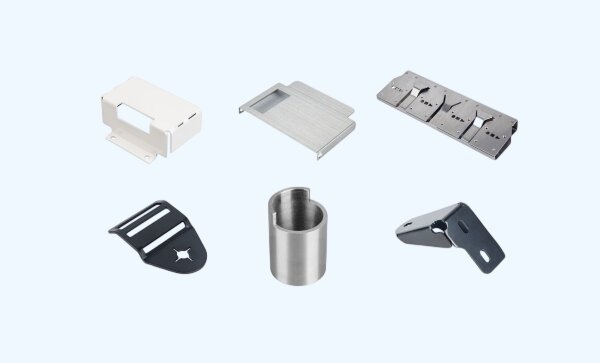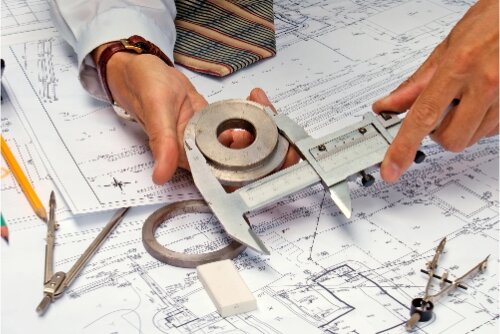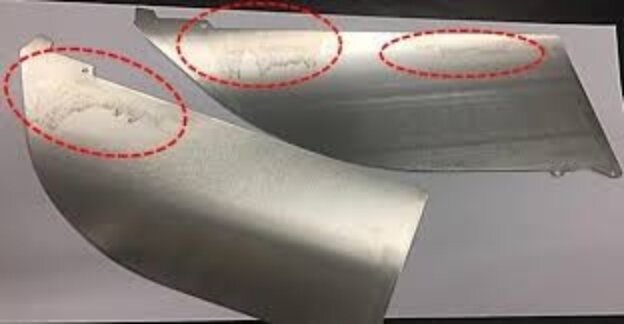Titanium stamping is used in industries where parts need to be strong, reliable, and able to handle tough conditions. It’s popular because it’s light, strong, and resists rust and corrosion. But stamping titanium isn’t as simple as working with aluminum or steel. It takes a different approach—both in setup and execution.
If titanium is so tough to stamp, why do some shops keep using it? Let’s examine the process, best practices, and ways to avoid common problems.

What Is Titanium Stamping?
Titanium stamping is the process of pressing flat titanium sheets or coils into specific shapes using dies and high-force presses. The stamping process can include steps like deep drawing, blanking, bending, embossing, or piercing, each helping shape the metal into the final part.
It has a high strength-to-weight ratio and doesn’t deform easily, which causes more springback during bending. Titanium also doesn’t transfer heat well, so tools can wear out faster, and forming may take longer. That’s why shops often need to use harder tools, special lubricants, and carefully control the speed and pressure of the press.
Titanium Material Fundamentals
To work with titanium properly, you need to understand the material. Different grades of titanium act differently during stamping. Knowing their main features helps avoid errors and get better results.
Grades of Titanium Used in Stamping
Titanium is available in two main types: commercially pure (CP) and alloy grades. Each one meets different needs depending on its strength, resistance to rust, and ease of formation.
- Grade 1: This is the softest and easiest to shape. It’s good for deep drawing and detailed parts. Common in chemical tanks and medical parts.
- Grade 2: A bit stronger than Grade 1 but still easy to stamp. It’s the most popular CP grade in general metal work.
- Grades 3 and 4: These are stronger but harder to form. They’re often used in pressure vessels and structural parts.
- Grade 5 (Ti-6Al-4V) is the most widely used titanium alloy. It’s very strong, light, and resists corrosion well. But it’s harder to stamp because it doesn’t bend easily.
- Grade 9 (Ti-3Al-2.5V): This one balances strength and formability. It is easier to work with than Grade 5 but tougher than pure titanium.
Mechanical and Physical Properties of Titanium
Titanium is known for being strong, light, and resistant to rust. These traits make it behave differently from metals like steel or aluminum during stamping.
- Strength-to-weight ratio: Titanium is as strong as steel but much lighter. This makes it great for parts that need strength but not heavy.
- Ductility: CP grades bend more easily. Alloys like Grade 5 are stiffer and can crack if not handled properly.
- Springback: Titanium tends to bounce back after bending. You may need to overbend or adjust the die to fit the right shape.
- Thermal conductivity: Titanium doesn’t transfer heat well. It gets hot during stamping, which can wear out tools faster if not managed.
- Corrosion resistance: Titanium holds well in saltwater, chemicals, and other tough environments.
Titanium Stamping Processes
Titanium can be formed in many ways, but each method has limits. The right choice depends on the part design, production size, and the titanium grade you’re using.
Cold Stamping vs. Hot Stamping for Titanium
Cold stamping shapes titanium at room temperature. It works well for thin sheets and simple parts. This method is often used with softer grades like Grade 1 or Grade 2. Cold stamping helps keep the metal’s grain and surface finish. However, titanium’s high strength and low ductility can cause springback or cracking.
To make cold stamping work, you usually need:
- Well-designed dies with smooth radii.
- Presses that deliver high force
- Lubricants to reduce wear and friction
Hot stamping involves heating the titanium before forming it. Most grades are formed between 500°C and 900°C. Heating lowers the metal’s strength, making it easier to bend and shape without damage. This method is best for harder alloys like Grade 5, especially aerospace or automotive parts.
Hot stamping setups need:
- Heating systems for the sheet or die
- Dies that can handle high temperatures
- Proper cooling to avoid warping or oxidation
Progressive Die Stamping
Progressive stamping is used when you need high-volume parts. A long strip of titanium feeds through a die with several stages. Each stage does one job — cutting, bending, or forming — until the final part is made at the end.
This method is great for parts that need multiple steps. It reduces handling, speeds up production, and keeps results consistent. It’s often used for aerospace and electronics clips, brackets, or small connectors.
Because titanium is tough and springy, the dies must be designed carefully. Each station has to adjust for springback and stress. Lubrication is also very important to prevent galling and reduce tool wear.
Deep Drawing and Embossing Techniques
Deep drawing stretches a flat titanium sheet into a die to create round or box-like shapes. This method makes items like medical shells, containers, and thin enclosures. Since titanium isn’t very ductile, getting the shape right often takes several steps. Heating between stages (annealing) helps reduce cracking.
To get better results with deep drawing:
- Keep the draw depth low in each step
- Apply even force to hold the sheet in place
- Add annealing if the metal starts to tear
Embossing presses patterns into the titanium surface. These could be logos, textures, or grip marks. A pair of matched dies presses the shape into the part. Embossing can be part of the main stamping step or done separately at the end.
Because titanium springs back after forming, embossed details may not stay sharp. You may need more pressure or extra steps for deeper designs. Still, embossing is a fast and low-cost way to add function or branding.
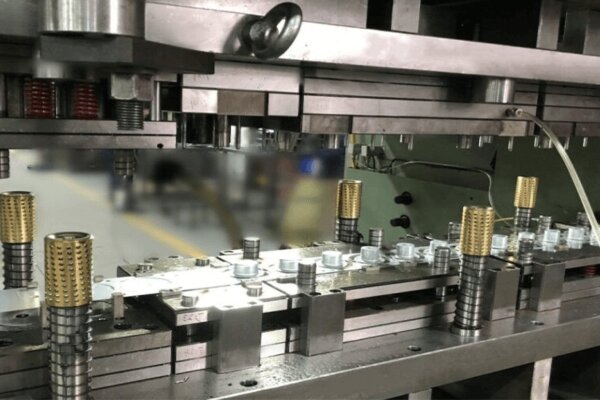
Key Benefits of Titanium Stamping
Titanium isn’t just strong — it’s built for high performance in the toughest settings. These benefits make stamped titanium parts worth the extra effort and cost.
Strength-to-Weight Ratio and Corrosion Resistance
Titanium offers a high strength-to-weight ratio. It’s nearly as strong as stainless steel but about 40% lighter. This makes it ideal for industries where weight reduction helps performance or efficiency, such as aerospace, automotive, and sporting goods.
It also resists corrosion better than most metals. Titanium holds up without coatings or frequent replacements, whether exposed to saltwater, chemicals, or humid environments. This extends the part’s life and reduces maintenance.
Biocompatibility and Heat Resistance
Titanium is biocompatible, which means it works safely inside the human body without causing reactions. This is why it’s common in medical implants, surgical tools, and dental hardware. Stamped titanium parts can be shaped into precise medical forms while maintaining the material’s purity.
It also resists heat. Titanium maintains its strength even at high temperatures. It doesn’t deform easily under heat stress. This makes it a strong choice for aircraft components, engine parts, and industrial tools that face high thermal loads.
Durability in Harsh Environments
Titanium is tough. It resists impact, stress, vibration, and wear. Under repeated use in aggressive conditions, it doesn’t crack or corrode like aluminum or steel.
Titanium lasts longer in harsh environments — offshore rigs, chemical plants, or desert climates. Stamped parts can survive years of exposure without failing. This reliability justifies the higher material and tooling costs.
Common Applications of Titanium Stamped Parts
Titanium stamping is used across industries where performance, reliability, and long-term durability are critical. Here’s how different sectors use it to solve real-world challenges.
Aerospace
In aerospace, weight and strength both matter. Stamped titanium parts are used in structural brackets, panels, and heat shields. These parts help reduce aircraft weight without sacrificing safety.
Titanium’s resistance to heat and corrosion also makes it perfect for engine parts, fuel system components, and fasteners. It holds up in high-altitude, high-stress environments where other metals fail.
Medical Devices
Titanium is non-toxic and doesn’t react with body tissues, so it’s used for stamped parts in surgical tools, implant frames, and orthopedic components.
Stamping allows manufacturers to shape thin, precise forms that stay strong and sterile. The process also supports high-volume production of consistent, high-quality parts.
Automotive
Titanium is used in high-performance and electric vehicles to reduce weight while boosting strength. Stamped titanium parts are found in suspension systems, heat shields, exhaust components, and brackets.
Its heat resistance is ideal for parts near engines or batteries. Using titanium helps improve fuel efficiency and handling without compromising durability.
Consumer Electronics
Titanium is lightweight, strong, and stylish, making it perfect for housings, bezels, and internal supports in laptops, smartphones, and wearables.
Stamped titanium parts give premium electronics a sleek, high-end finish, adding scratch resistance and rigidity. The result is a durable product that feels good in the hand and lasts longer.
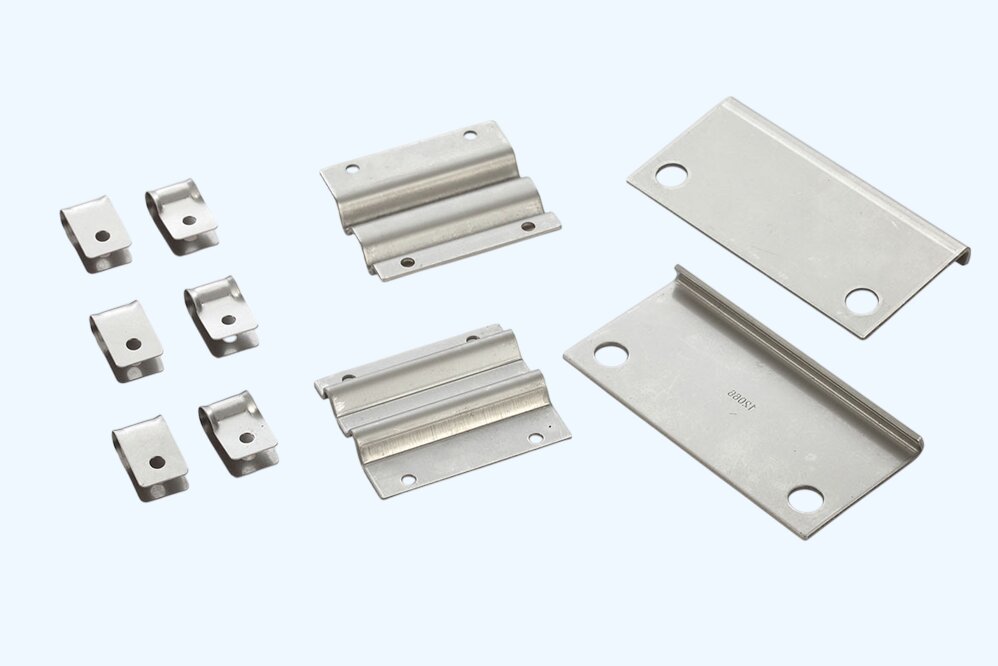
Challenges in Titanium Stamping
Stamping titanium is more difficult than working with steel or aluminum. Its strength, low stretchability, and surface behavior create unique problems, requiring careful planning and special techniques.
Galling and Tool Wear
Titanium sticks to tools when pressed, especially under high pressure or heat. This sticking is called galling. It happens when bits of titanium tear off and stick to the die or part surface. Galling can ruin the finish and damage the tool.
Also, titanium is tough on dies. It wears them down faster than softer metals. To reduce this, shops use:
- Tooling made of hard or coated materials
- Lubricants that lower friction
- Frequent tool checks and maintenance
Difficulty in Forming Complex Shapes
Titanium doesn’t bend as easily as other metals. It has low ductility and strong springback, so it tends to return to its original shape after forming. This makes it hard to create deep, curved, or complex shapes without issues.
Problems like cracking, poor angles, or distortion are common. To solve this, manufacturers often:
- Use hot forming instead of cold forming
- Add more forming steps
- Design dies with larger bend radii and tighter control
Heat Build-Up and Work Hardening
Titanium doesn’t release heat quickly. During stamping, the metal heats up fast and stays hot, which can damage the tools and affect the part’s appearance.
Also, the more you form titanium, the harder it gets — a process called work hardening. This makes it harder to bend again without cracking.
To manage these issues, it’s common to use:
- Slower press speeds
- Cooling systems or rest time between steps
- Forming in stages, with annealing between passes if needed
Best Practices for Successful Titanium Stamping
Titanium can be stamped with good results, but it takes the right setup. The tips below help reduce tool wear, avoid part defects, and improve quality throughout production.
Proper Lubrication and Coating Techniques
Friction is a big issue when stamping titanium. If the sheet sticks to the die, it can cause galling and damage both the tool and part. That’s why good lubrication is critical.
Standard oils often don’t work well on titanium. Instead, use high-performance options like:
- Solid film lubricants
- Lubes with graphite, molybdenum disulfide, or boron nitride
In high-volume jobs, die coatings help even more. Coatings like titanium nitride (TiN) or diamond-like carbon form a hard, slick surface, helping reduce sticking and extend die life.
Always apply lubricant evenly. Reapply it during long runs. And test your lube and coating combo with the specific titanium grade you’re using.
Temperature and Speed Control
Titanium heats up fast during stamping and doesn’t cool down quickly. If forming is too fast, that heat builds up. This can cause cracks, wear out tools, and ruin the part.
To avoid this:
- Run the press at slower speeds
- Use hot stamping for tough alloys like Grade 5
- Keep the heat even across the whole sheet
Uneven heating causes warped or distorted parts. If you’re using hot stamping, ensure the setup includes heat sensors or temperature controls. Avoid trying to form the whole shape in one go. Instead, shape the part in several lighter steps.
Post-Processing and Finishing Approaches
Stamped titanium parts often need cleanup. Edges might be sharp, the surface may have marks, and the metal may hold internal stress. Post-processing fixes these issues and improves part quality.
Common finishing steps include:
- Deburring: Smooths out sharp edges and removes burrs from punching or trimming
- Annealing: Releases stress in the metal and makes it easier to shape in later steps
- Surface treatment: Pickling, passivation, or blasting can clean and prepare the surface
- Polishing or brushing: Used when the final part needs a clean look or smooth finish, especially for medical or consumer products
Conclusion
Titanium stamping offers a way to produce strong, lightweight, and corrosion-resistant parts across aerospace, medical, automotive, and electronics industries. While the process is more complex than stamping steel or aluminum, carefully controlling tooling, temperature, and lubrication makes high-quality results possible.
Are you looking to produce custom titanium stamped parts? Contact us today for expert guidance, fast quotes, and reliable manufacturing support tailored to your needs.
Hey, I'm Kevin Lee

For the past 10 years, I’ve been immersed in various forms of sheet metal fabrication, sharing cool insights here from my experiences across diverse workshops.
Get in touch

Kevin Lee
I have over ten years of professional experience in sheet metal fabrication, specializing in laser cutting, bending, welding, and surface treatment techniques. As the Technical Director at Shengen, I am committed to solving complex manufacturing challenges and driving innovation and quality in each project.

